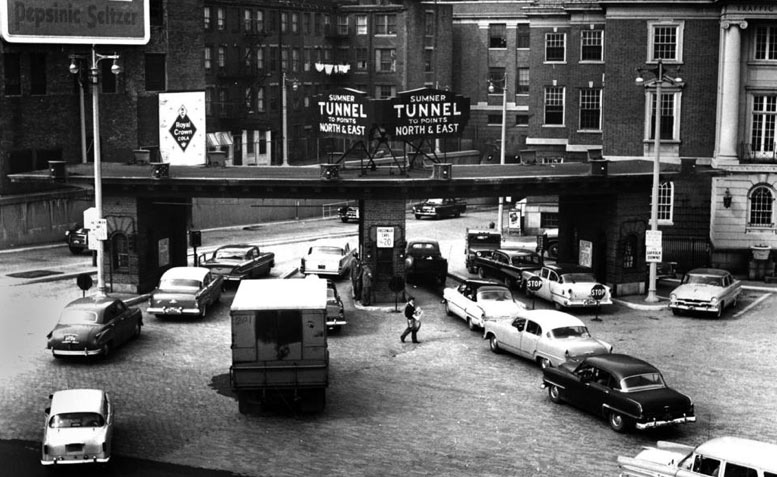Rehabilitation for critical Boston harbor tunnel 27 May 2015
Parsons Brinckerhoff is awarded design of the estimated US$39 million rehabilitation of the critical cross-harbor Sumner traffic tunnel in Boston, USA.
The 81-year-old tunnel, which was opened in 1934 and extends 5,700ft (1,660m) under Boston Harbor, carries southbound Route 1A traffic from east Boston and Logan International Airport to Downtown. Completion of the rehabilitation will extend the life of the tunnel to 2090.
The rehabilitation plan – design of which is scheduled for completion by February next year (2016) – entails complete removal and replacement of all architectural finish components, wall panels and supports, ceiling panels and the roadway slab. Other project elements include repair of the structural arch concrete, a new jet fan ventilation system, and new tunnel systems, including tunnel lighting, communications, SCADA and TCS, fire protection and tunnel drainage.
The two-lane Sumner Tunnel is the second of two parallel cross-harbor tunnels that require total rehabilitation. In 2014 the Massachusetts Department of Transportation (MassDOT) completed similar rehabilitation work on the parallel Callahan Tunnel, which was constructed later, in 1960, to relieve pressure on the then bidirectional Sumner Tunnel. When the two-lane Callahan Tunnel opened in 1961 the Sumner Tunnel switched to a two-lane unidirectional configuration.
With work on the Callahan Tunnel now completed, attention turns to the older tunnel, which is a semi-transverse circular tunnel with a roadway slab constructed over the fresh air duct and an exhaust duct constructed over. The tunnel was constructed under compressed air, with a temporary 29.5ft (9m) diameter segmental steel liner and a final lining of 19.7in (50cm). In 1960, and as a result of improper original placement, the ceiling in the tunnel was removed and replaced with a cast-in-place concrete ceiling. At the same time as the ceiling was being replaced, the granite cobblestone roadway was removed and replaced with bituminous concrete.
No schedule or timescale for the work to be carried out has yet been issued. However, the Callahan Tunnel rehabilitation required 14 months to complete, including eight weeks of total closure between December 27, 2013 and March 12, 2014, to enable the grinding down of the road deck down to the steel supports, and the subsequent pouring of a new deck.
A need for urgent rehabilitation was demonstrated on December 21, 2013, when a wall panel in the Callahan Tunnel fell onto the roadway. Although there were no injuries or damage to vehicles as a result, MassDOT immediately closed the Callahan Tunnel and performed load tests on all 2,400 of its wall panels. A total of 121 panels, including three adjacent to the panel that fell, plus 117 additional panels as a result of the load tests, were permanently removed prior to the start of the extensive rehabilitation work that took place in 2014. The adjacent Sumner Tunnel – which featured the same panel system – was also closed for inspection, but its panels were judged to be in superior condition, and hence it was decided to defer its rehabilitation until after the Callahan.
References
- Robotic hydrodemolition speeds up repairs – TunnelTalk, February 2015
- Speeding up tunnel repairs in Belgium – TunnelTalk, April 2015
|
|
|
|
|
Add your comment
- Thank you for taking the time to share your thoughts and comments. You share in the wider tunnelling community, so please keep your comments smart and civil. Don't attack other readers personally, and keep your language professional.





